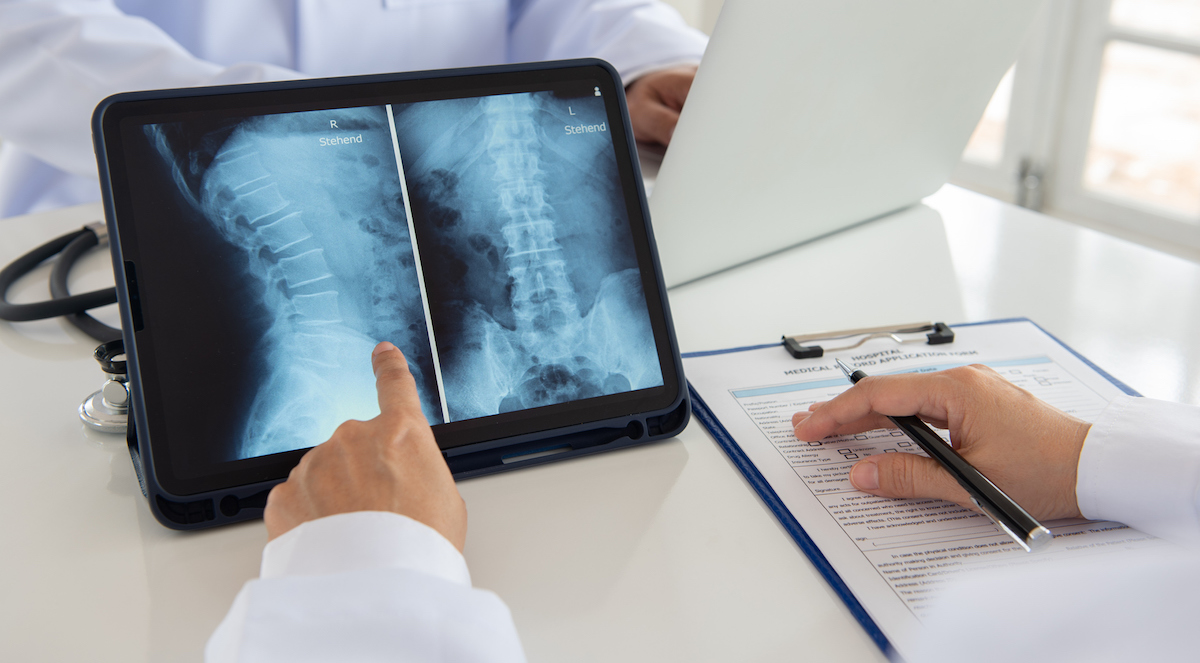John Collins may be 72, but he likes to stay in shape, walking every day until the pain in his left hip and numbness in his left leg started in March.
The retired software engineering supervisor who lives in Westport was diagnosed with spinal stenosis and a surgeon recommended spinal fusion for relief. He made his way to the Hartford HealthCare Ayer Neuroscience Institute Spine Wellness Center for a second opinion, and became the sixth patient to undergo awake spine surgery on Oct. 8.
“I went to see Dr. (Vijay) Yanamadala, whose diagnosis was the same but his solution was a little different. He described awake surgery to do a (two-level) laminectomy. It was minimally-invasive which was appealing to me,” Collins said.
Dr. Yanamadala, medical director of spine quality and surgical optimization for Hartford HealthCare, performed the surgery in the morning. Collins was discharged four hours later and taking a 1.3-mile walk with his wife that afternoon.
“I’ve walked every day since – a little farther and a little faster,” he said, noting that his most recent walk was at a pace of 7 mph.
“I can’t imagine an outcome being any better.”
“Awake spine surgery is a growing trend,” said Dr. Yanamadala, who sees patients at the Spine Wellness Center in Westport and performs surgery at St. Vincent’s Medical Center in Bridgeport. “Our cutting-edge anesthesiology team — including Drs. Vlad Frenk, Theresa Bowling and David Maduram — were the first in the United States to use this innovative technique combining spinal anesthesia with a nerve block to keep the patient comfortable throughout the procedure. Awake surgery helps avoid the risk of general anesthesia and patients recover faster and better.”
Spinal anesthesia is used to numb the patient in the spine and legs. The nerve block provided by anesthesiologist Dr. Frenk offered pain relief that lasted for about 36 to 48 hours after surgery, helping decrease the need for opioids. Collins said he went home with a prescription for pain medication but “didn’t even open the bottle.”
The procedure is performed by inserting a surgical tube through a 2-centimeter incision on the back. Dr. Yanamadala removed the soft tissues in Collins’ spine that were pressing on nerves and causing the pain and numbness. Two incisions were made on Collins because he had stenosis at two levels in his spine.
“(Before surgery), I could walk a little, but it really hurt to stand still,” said Collins. “The question was always, Could I stand at the kitchen counter long enough to make a salad?’ We did a test in the hospital and I stood just fine for two minutes. The relief has been just about complete.”
Dr. Yanamadala expanded the procedures available to awake patients, most recently performing the first spine fusion surgery with no general anesthesia in New England.
“Prime candidates for this type of surgery are older people with medical comorbidities that make intubation and general anesthesia a higher risk,” he said, adding that, “It’s not good for major surgery.”
He has, however, performed awake surgery for patients as young as 25, one of whom recently told him, “Why would I want to do the surgery with an intubation if I don’t need it?”


